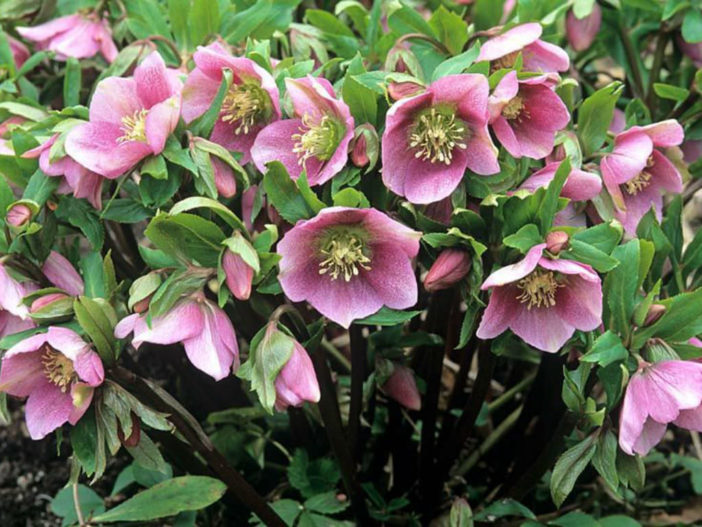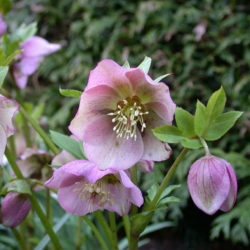Scientific Name
Helleborus orientalis Lam.
Common Name(s)
Lenten Rose, Christmas Rose
Synonym(s)
Helleborus kochii, Helleborus officinalis, Helleborus ponticus
Scientific Classification
Family: Ranunculaceae
Subfamily: Ranunculoideae
Tribe: Helleboreae
Genus: Helleborus
Flower
Color: White to pink to light rose-purple
Bloom Time: Winter
Description
Helleborus orientalis is a clump-forming perennial that grows up to 18 inches (45 cm) tall. It features large, cup-shaped, rose-like, usually nodding flowers, up to 4 inches (10 cm) in diameter, with center crowns of conspicuously contrasting yellow stamens. In late winter, the flowers typically appear in clusters of 1 to 4 on thick stems rising above the foliage. Flower color is extremely variable, ranging from white to pink to light rose-purple, frequently with interior spotting. The basal leaves are palmate, serrate, rough, and up to 16 inches (40 cm) wide. They are glossy dark green, evergreen in warm climates but deciduous in extremely cold winters.

Hardiness
USDA hardiness zone 4a to 9b: from −30 °F (−34.4 °C) to 30 °F (−1.1 °C).
How to Grow and Care
Place the Hellebore into well-draining, organic soil in filtered sun or shady location when planting from seed or division. The Hellebore plant will return for many years; make sure space will accommodate growth and has proper sunlight.
Hellebores need no more than a few hours of dappled light and grow successfully in shady areas. Plant the Hellebore under deciduous trees or scattered through a woodland garden or shaded natural area.
Soaking the soil in which the Hellebore is growing helps the Hellebore plant look its best. Hellebore care includes the removal of older leaves when they appear damaged. Care for Hellebores should also include careful fertilization. Too much nitrogen may result in lush foliage and a shortage of blooms.
Plant Hellebore seeds in the fall. A 60-day moist chilling period is needed when planting seeds of the Hellebore plant. Planting seed in fall allows this to happen naturally in areas with cold winters. Wait three to four years for blooms on young plants grown from seed. Divide overgrown clumps in spring, after flowering, or in autumn.
See more at How to Grow and Care for Hellebores.
Origin
This species is native to Greece and Turkey.
Links
- Back to genus Helleborus
- Plantpedia: Browse flowering plants by Scientific Name, Common Name, Genus, Family, USDA Hardiness Zone, or Origin
Photo Gallery
Click on a photo to see a larger version.




